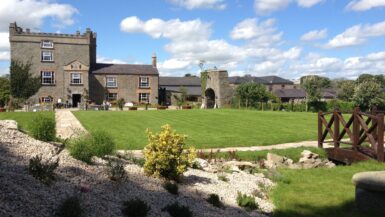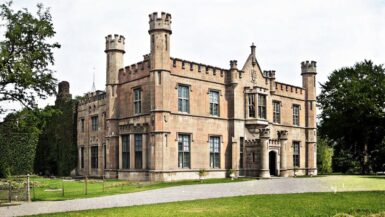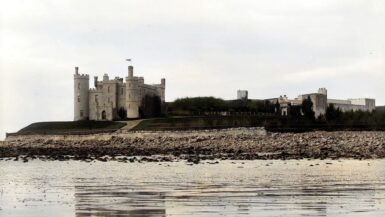Shankill Castle, located in Paulstown, County Kilkenny, is a historic and picturesque estate that stands as a testament to the architectural styles and social changes that took place in Ireland from the early 18th century to the present day. Nestled on the border of County Carlow and County Kilkenny, this castellated house has undergone several transformations throughout its history, each reflecting the prevailing styles and tastes of the time.
Early History:
The origins of Shankill Castle can be traced back to the early 18th century when it was built as a residence for the Aylward family. In 1713, the house was constructed on the grounds of an earlier medieval tower house, and it incorporated elements of the original structure, including its fortified appearance. The Aylward family, originally Anglo-Normans, had settled in the area following the Norman invasion of Ireland in the late 12th century.
18th Century Developments:
Throughout the 18th century, Shankill Castle underwent a series of expansions and renovations that reflected the growing wealth and status of its occupants. The interior was designed to embody the elegance and opulence of the era, with a particular emphasis on the late Georgian staircase, which is a striking example of the craftsmanship of the time. The staircase features intricate carvings and impressive balustrades, making it a centerpiece of the property.
One of the most notable features of Shankill Castle during this period was the creation of the Gothic-style plasterwork in the dining room. This decorative element added a touch of drama and sophistication to the space, showcasing the skill of the artisans who worked on the project. The plasterwork, characterized by intricate patterns and ornate motifs, is a perfect example of the Gothic Revival style that was popular during the 18th century.
Victorian Era:
In the 19th century, Shankill Castle experienced another significant transformation, reflecting the tastes and sensibilities of the Victorian era. The drawing room was redesigned in a charmingly Victorian style, complete with plush furnishings, rich fabrics, and elegant woodwork. The room, which was used for entertaining guests and hosting intimate gatherings, became a symbol of the refined social life that the occupants of the castle enjoyed during this period.
20th Century and Beyond:
Shankill Castle remained a private residence for much of the 20th century, with several generations of the Aylward family calling it home. However, in the 1990s, the property was sold to the Cope family, who undertook extensive restoration and conservation work to preserve the historic features of the castle. Today, the castle is open to the public for guided tours, allowing visitors to experience the rich history and architectural splendor of this unique property.
Conclusion:
Shankill Castle is a fascinating example of the evolution of Irish architectural styles and design throughout the centuries. Its beautifully preserved interiors, including the late Georgian staircase, Gothic plasterwork in the dining room, and Victorian drawing room, offer visitors a glimpse into the lives of the Irish gentry from the 18th to the early 20th century. As an important historic site in County Kilkenny, Shankill Castle stands as a testament to the craftsmanship, artistry, and social changes that have shaped Irish history.





Leave a reply